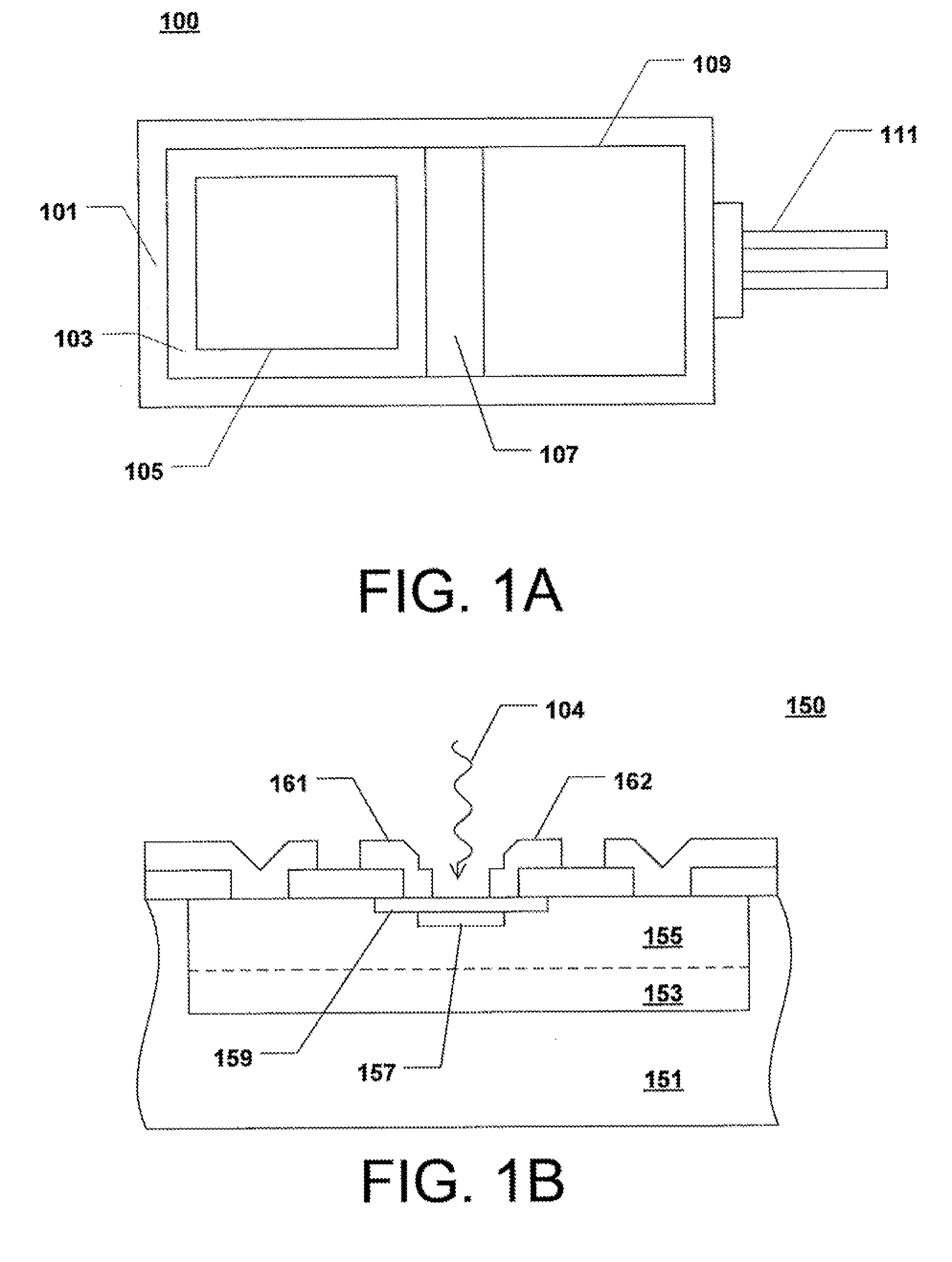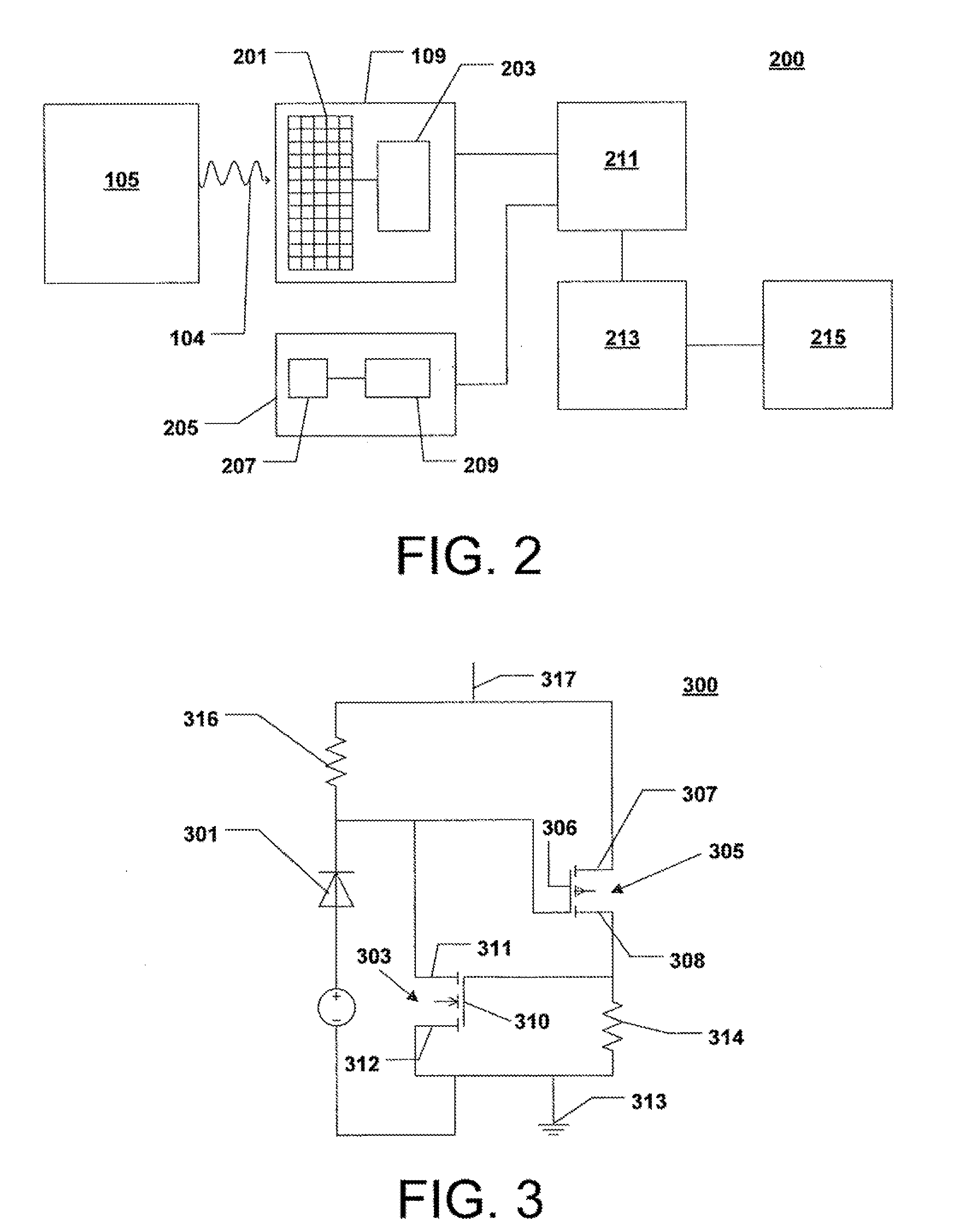Scintillator and detector assembly
a detector and assembly technology, applied in the field of detectors, can solve problems such as affecting detector durability and accuracy
- Summary
- Abstract
- Description
- Claims
- Application Information
AI Technical Summary
Benefits of technology
Problems solved by technology
Method used
Image
Examples
Embodiment Construction
[0019]The following is directed to a detector suitable for use in industrial applications, particularly well-logging applications, wherein sensitive components are exposed to extreme environmental conditions including repetitive mechanical shocks and high temperatures. In particular, the detectors described herein incorporate a combination of components making the detector capable of improved responsiveness and accuracy, while also suitably ruggedized for use in industrial applications.
[0020]FIG. 1A includes a cross-sectional illustration of a detector in accordance with an embodiment. As illustrated, the detector 100 includes a housing 101, that includes a scintillator 105 contained within a casing 103 also contained within the housing 101. The scintillator 105 can be optically coupled to a photodetector 109 via a light pipe 107. Additionally, the photodetector 109 can have electrical contacts 111 extending from the housing 101 configured to electrically couple the photodetector 10...
PUM
 Login to View More
Login to View More Abstract
Description
Claims
Application Information
 Login to View More
Login to View More - R&D
- Intellectual Property
- Life Sciences
- Materials
- Tech Scout
- Unparalleled Data Quality
- Higher Quality Content
- 60% Fewer Hallucinations
Browse by: Latest US Patents, China's latest patents, Technical Efficacy Thesaurus, Application Domain, Technology Topic, Popular Technical Reports.
© 2025 PatSnap. All rights reserved.Legal|Privacy policy|Modern Slavery Act Transparency Statement|Sitemap|About US| Contact US: help@patsnap.com



